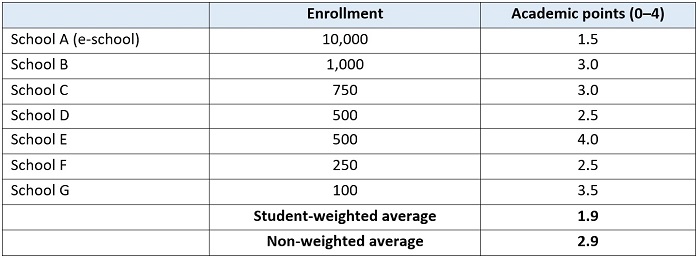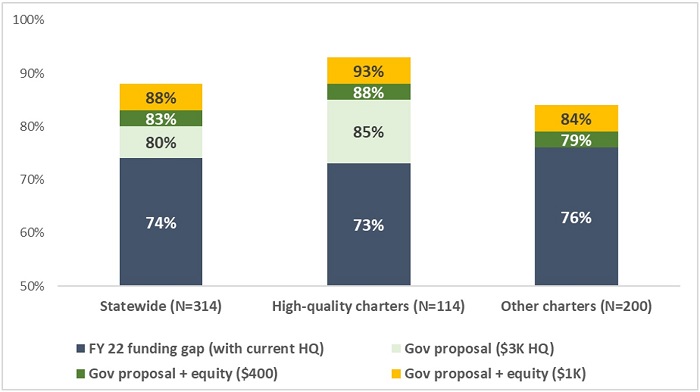Since 2005, Ohio has provided state-funded EdChoice scholarships, or vouchers, to help eligible students cover the cost of attending private schools. Over the years, lawmakers have steadily expanded eligibility and increased funding levels for the program via the state budget. This year’s budget cycle is continuing the trend, but with the added wrinkle of eliminating a portion of current policy aimed at making private school choice more accessible for low-income families.
Under current law, families with incomes at or below 250 percent of the federal poverty level, or about $75,000 for a family of four, are eligible for income-based EdChoice scholarships, as are students who would otherwise attend low-performing public schools. When Governor DeWine released his budget recommendations in January, he proposed raising the threshold for income-based EdChoice to 400 percent. This would allow a family of four with an annual household income of $120,000 (think two parents, each making a solidly middle-class income of $60,000 or below) to be eligible. In its version of the budget, the House proposed raising the threshold to 450 percent. The Senate, meanwhile, took things even further by eliminating income restrictions entirely. Under its version, every family in Ohio would be eligible for income-based EdChoice, though families with incomes above 450 percent ($135,000 for a family of four) would be subject to a sliding scale—the higher their annual income, the smaller their scholarship amount.
One of the primary benefits of expanding EdChoice is that it gives more families access to more school options. Ohio has some amazing traditional public schools, but parents have to be able to afford to buy a house or pay rent within district boundaries in order to enroll their children in some of the most coveted ones. Meanwhile, average private school tuition in Ohio clocks in at around $7,600. Divided across twelve months, that’s a hefty monthly bill of over $630—and that’s just for one child. By expanding EdChoice eligibility, lawmakers make it possible for more families to make decisions based on what their kids need, rather than what they can afford.
It’s also important to remember that school choice is about more than just money. Families consider a lot of characteristics when they choose a school. Academics, school quality, culture, safety, and extracurricular opportunities can all make or break whether a school is the right choice for their child. Sometimes, it’s not a matter of their public school being “bad.” It’s just a matter of it not being the right fit. Expanding EdChoice eligibility empowers more families to find the right fit.
For these reasons, the Senate’s EdChoice expansion is great news. But buried among the budget’s many provisions is a seemingly small change that could have a big impact on Ohio’s lowest-income families’ ability to access private school options. In doing so, it could dull the luster of otherwise positive changes.
Under current law, for families whose income is at or below 200 percent of the federal poverty guidelines (that would be an annual income of $60,000 or less for a family of four), private schools are prohibited from charging tuition that is greater than the EdChoice scholarship amount. In other words, if the state scholarship doesn’t cover the entire cost of tuition, schools aren’t allowed to ask low-income families to pay the leftover amount. By requiring private schools to accept EdChoice scholarship amounts as full tuition, the state ensures that Ohio’s low-income students aren’t shut out of private school choice just because their families can’t afford to make up the difference between the voucher amount and tuition.
It’s a smart policy. Given that one of the key aims of EdChoice is to give economically disadvantaged families access to private schools they otherwise couldn’t afford, it seems wise to ensure that schools can’t charge low-income families tuition that would put private school out of their financial reach. And yet, the Senate’s version of the budget eliminates this requirement. Unless something changes in the coming days, private schools will soon be allowed to charge low-income families amounts above the voucher allocation.
If you’re wondering why the Senate would do this, you’re not alone. There are a few possible explanations. One is that lawmakers believe the current tuition cap discourages some schools from participating in EdChoice. The average private school tuition in Ohio might be around $7,600, but there are plenty of schools that charge far more than that. During the 2023–24 school year, EdChoice scholarships will be worth up to $5,500 for grades K–8 and $7,500 for grades 9–12. If a private school charges more than that—say, $15,000—then the school will have to make up a difference that amounts to half of a typical tuition bill for every low-income student it accepts. At some point, the argument goes, private schools won’t be willing to cover the cost, and it will be financially smarter for them to just refuse to accept EdChoice scholarships. The more schools that decide to do this, the fewer options there will be for families.
There may be some truth to that argument. But it’s not worth risking the possibility that private schools will begin charging tuition to low-income kids and push them out of potentially life-changing educational opportunities. Between the higher voucher amounts slated for approval in this year’s budget (approximately $6,165 for K–8 and $8,407 for 9–12) and the fact that many private schools located in high-poverty communities will want to avoid charging tuition so as not to risk losing students, schools have some incentives to serve disadvantaged children. Nevertheless, we must ensure that EdChoice continues to explicitly prioritize giving economically disadvantaged families more opportunities.
Another explanation is that lawmakers believe they’ve already created a solution to the potential problem of schools pricing out low-income families. In 2021, the General Assembly passed legislation that permitted the creation of Scholarship Granting Organizations, or SGOs. Nonprofits that meet certain eligibility criteria can be certified as an SGO and collect donations on behalf of participating private schools that will then use the funds to provide scholarships to students. State law requires SGOs to prioritize awarding scholarships to low-income students, which the Ohio Administrative Code defines as those from families with household incomes under 300 percent.
In theory, these entities could help low-income families make up any differences between EdChoice scholarship amounts and tuition. Right now, SGOs don’t help families with incomes at or below 200 percent because they don’t need to; private schools can’t charge these families additional tuition, so there’s no need for additional scholarship funds. That would change if the provision prohibiting private schools from charging tuition gets eliminated, and lawmakers might see SGOs as a backstop. Sure, private schools might start charging low-income families tuition, but SGOs could fill in the gaps and keep private education affordable for Ohio’s neediest families.
The operative word, though, is “could.” Private schools aren’t required to work with SGOs. And SGOs are dependent on donations, which determine how many families they can help and how much financial assistance they can provide. If private schools are permitted to charge low-income families tuition, SGOs could help. But that doesn’t mean they will. It would be better if current law were maintained for low-income families, and SGOs could work to fill the tuition-voucher gap for families between 200 and 400 percent of the federal poverty level.
***
Almost two decades ago, EdChoice was created to ensure that all families have access to private school options. These scholarships were, first and foremost, intended to help economically disadvantaged families access private school options that had previously been out of reach. Thousands of low-income students have benefitted as a result. Eliminating a provision that protects these students from being priced out of a program designed to give them access is wrong, and lawmakers should reconsider.










